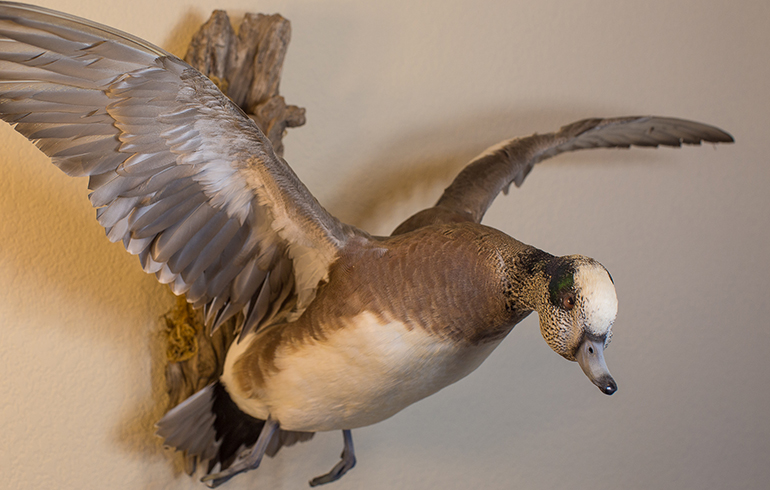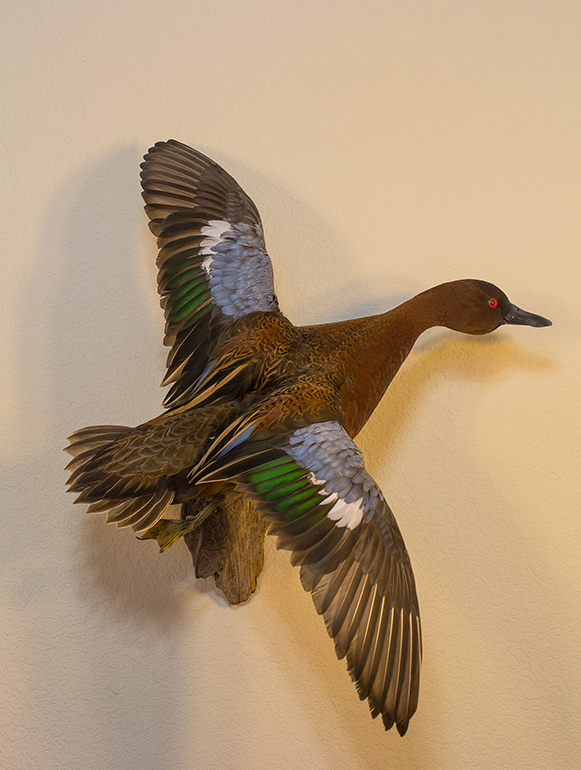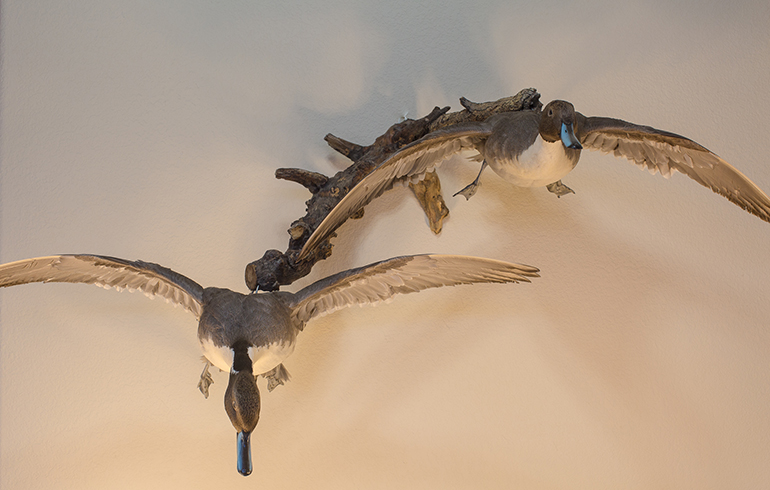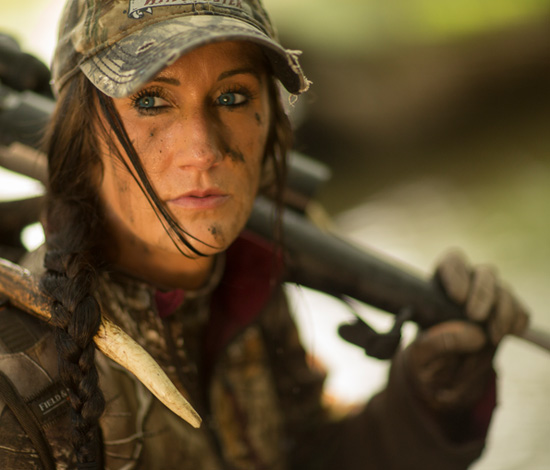Pre-Taxidermy Tips For Waterfowl
Taxidermy is a beautiful way to preserve memories from the field for generations to come.
Although many people know and understand the best methods for taking care of big game in the field, waterfowl field-preparation is an incredibly important step to ensure a stunning mount. The skin and feathers of waterfowl are very thin and can be damaged easily unless proper care is taken. Here are a few steps that should be taken from the moment you have a bird down that you think could be one you want to mount.

- Hold Your Dog Back– If a bird drops that you think could be a potential candidate for a taxidermy mount, go retrieve the bird yourself. This will eliminate the chance of the dog causing additional damage to your bird.

- Once You Retrieve Your Bird– Place it on ice if it’s warm. Immediately start cooling the bird down. If it’s super-cold, don’t set it on a metal boat or seat. This can cause the bird to freeze to the metal and destroy feathers. If it’s a warm hunt, bring some ice so you can start the cooling process immediately.
- No Neck Straps– Handle the bird as delicately as if it was already mounted when carrying it out of the field. Many taxidermists also recommend putting cotton balls in the birds bill to keep blood from soaking feathers. Blood can be washed off with cold water when you return home. However, if you’re looking to mount a bird with white feathers such as a tundra swan, snow goose or goldeneye, blood can stain feathers.

- Time To Freeze– Once home with your bird that you plan on mounting, place the whole bird (do not breast or gut) in a plastic bag with the head under a wing. This will prevent the neck and head from accidentally breaking off in the freezer. Do not wrap the bird in newspaper as the ink can bleed onto your bird and also cause dehydration! The newspaper will naturally draw moisture out of the bird therefore causing it to freezer burn. The freezer burn will then dry the skin out around the beak and eyes making the job of skinning it virtually impossible in those areas. To avoid this, simply drop the entire bird in a plastic bag, remove all the air and wrap in another plastic bag. You can use Ziploc-type bags that seal closed, or take masking tape to ensure air stays out. Once in the freezer, your bird can last 6-8 months, but it’s best to get it right to your taxidermist if possible. If you plan on delivering it to your taxidermist within the first 48-hours you can place it in a refrigerator.
- Food Saver Bags for Freezer– Another option is putting your bird in a food saver type bag. However, be careful when using this method. First, if you plan to go this route make sure to put your bird in a plastic bag first. The texture of the food saver bag can actually imprint on the feathers if you’re not careful. Also, if your bird is still fresh when doing the vacuum seal of the bag, it will draw blood out of the wounds when air is sucked out of the bag. You’re better off freezing the bird first to avoid any unnecessary and excess blood.
- Late Season Birds Are Best– The “later in the season the better” when it comes to mounting Early in the season many of the adult birds still have pin-feathers which will fall out during the mounting process. This can cause the mount to look old and patchy once complete.
- Pick The Mount Wisely– Pellet holes in the chest or wings are normal, however large holes with numerous missing feathers or a broken wing may influence the type of form you choose. Usually you can discuss with your taxidermist which mount may look best for the shape the bird is in.
- Once Complete– Once the bird is complete, be aware of a few things in your own home that can damage mounts over time. Keep your mount away from an open window as UV rays tend to fade the mount. Dust the mount monthly with a feather duster to avoid it getting loaded down with dirt, especially if you live on a gravel road. Don’t place the mount near a heat or A/C vent. Try not to allow people to “pet” the mount as oil from their hands will act as a magnet for dust in the future. Lastly, keep pets away from the taxidermy. Unfortunately, many mounts get destroyed by cats and dogs.
Taxidermy is a wonderful way for you to relive the memories of a hunt for years to come. Make certain to take time to assure the quality of the mount will be the best it can be. Ultimately, it can come down to the care and preparation you do in those first few hours after taking a bird.

Melissa Bachman
With a degree in broadcast journalism, Melissa set sights on a career in the outdoors. Traveling over 300 days a year to shoot for Winchester Deadly Passion, Bachman considers this her “dream job.” With a love for children, industry trade shows and the great outdoors, she films around the world for her adrenaline-pumped series.



